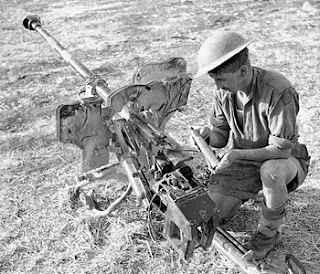 Here are members of the Reichsarbeitsdienst (Reichs work Service) "RAD" parading before Hitler, in a parade which was held the 7th of september 1938 at the Zeppelin-feld in Nürnberg.
Here are members of the Reichsarbeitsdienst (Reichs work Service) "RAD" parading before Hitler, in a parade which was held the 7th of september 1938 at the Zeppelin-feld in Nürnberg.(AP.archiv)
 A view towards the masses, in yet another party rally.
A view towards the masses, in yet another party rally.Hitler seen here giving the nazi salute
This one from 2009.
In the background you can clearly see the stone seatings from where the people could sit and watch the parade. Some of the seats being kept free from mother natures takeover, some already at her mercy.
This picture shows one of the numerous toilet facilities, which was build to accomodate thousands of peoples needs, through the hours of parading.
(you can still see in the top of the building the old posts where the swastika flags used to be)
All with flagposts.
 Here we have a picture of what was to be the Congresshall (Innenhof Kongresshalle)
Here we have a picture of what was to be the Congresshall (Innenhof Kongresshalle)
It was planned as a congress centre for the NSDAP, which should hold 50.000 people.
The building of the hall was started in 1935 (although never completed) still missing a roof.
It reached a height of 39 meters though 70m was planned, and had a diameter of 250m.
Close view of the congress hall.
A picture of the insides of the hall, with its beautifully constructed arches.

Here we see yet another one of the famous NSDAP parade grounds, this time its
the Ehrenhalle Luitpoldhain (Luitpoldhall). It was built in 1906, and could seat about 16.000 people.
It featured 76 loudspeakers and 42 spotlights.
(featured in the photo are middle: Adolf Hitler left: Reichsführer der S.S Heinrich Himmler and right: Chef des Stabes der S.A Viktor Lutze.)
Look closely at the little white house in the background, thats where Hitler stood and spoke during the rallies, and where from above the 3 big swastika flags you see in the previous photo hung.
This picture shows the "Ehrenhalle" or honourhall, this building is the only building still standing at Luitpoldhain.
This place is where Hitler along with Himmler and Lutze (in the previous picture) is seen standing, giving the nazi salute to honor those who fell in the first world war, and those who died in the failed putsch in 1923.
This almost sacred ritual was performed every year at the party rallies from 1933 untill 1938.
The Ehrenhalle in 2009, you can clearly see the stone pillars from the previous picture.
Not the best view im afraid since it was under construction when I visited that year.
Hopefully I will travel there again to have a better photo, the second time.
















